Relevant Overviews
User testing is straightforward, but it involves many moving parts, making it best to have a systematic process for planning and executing studies, as well as ensuring follow-up.
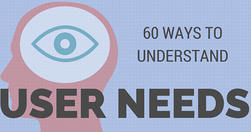
People new to user research often think of surveys and focus groups as the main ways to get insights into customer needs. Here are 60 alternative ideas you might want to try.
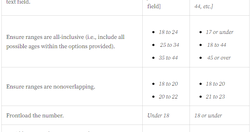
Researchers often want to ask about sensitive topics in surveys and screeners. A sensitive question is one that respondents might find embarrassing or invasive. Handle them appropriately and delicately to avoid dropoffs and inaccurate data.
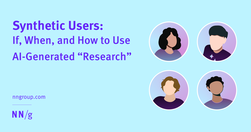
Synthetic users are fake users generated by AI. While there may be a few use cases for them, user research needs real users.
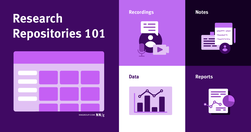
Research repositories organize user research in a central place, making research-related documentation easy to access and consume.
✅ Level 1: “What we tell others”, unreliable, opinions, hearsay. ✅ Level 2: “What we tell ourselves”, interviews, debrief, surveys. ✅ Level 3: “What we actually do”, task analysis, observation. ✅ Level 4: “Why we do it”, task walkthroughs, context, interviews.
Read About My Lightweight Approach to User Research and TestingFirst, I have written this post on their blog, sharing some key insights from the workshop that's definitely worth a read.The TLDR is that usability testing needn't be slow or costly. There are many great tools for testing that can make it easy.Of course I did kind of touch on this su…
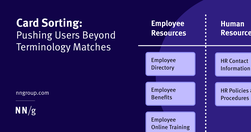
Labels in a card sorting study must be neutral to prevent keyword matching and encourage careful, conceptual groupings from users.

Understanding cognitive biases are not only important for UX Research and UX design, but also for navigating everyday life. Bias seeps into our judgment and thinking which can warp the reality of experience based on our subjective views.
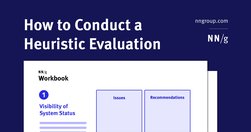
Step-by-step instructions to systematically review your product to find potential usability and experience problems. Download a free heuristic evaluation template. A heuristic evaluation is a method for identifying design problems in a user interface. Evaluators judge the design against a set of guidelines (called heuristics) that make systems ea…

Related ArticleBuilding Interactive UX MapsInteractions can be applied to high-fidelity UX maps to showcase user research and further engage with stakeholders.
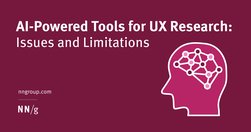
Be skeptical of the marketing claims being made by AI tools designed for UX researchers. Many of these systems are not able to do everything they claim.

With the proper context, prompts, and scrutiny, AI chatbots can be used to create a successful user-research plan.

The dual prompting approach in AI-driven UX design distinguishes between exploratory and detail-refining phases. Alternating these prompt styles can optimize your UX strategies and harness AI's potential for innovation and precision. Use both zero-shot and few-shot prompting for greater breadth and depth in creative problem-solving.

People new to user research often think of surveys and focus groups as the main ways to get insights into customer needs. Here are 60 alternative ideas you might want to try.
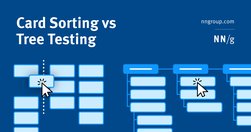
Card sort studies help shape information architectures; tree-testing studies evaluate them.

Even though surveys may be faster and cheaper than other research methods, they are not suited to all research goals.
We spent over 60 hours analyzing 150+ companies to find the best user onboarding examples. From home page copy and sign-up pages to onboarding emails and product tours, you can find plenty of examples to take inspiration from.
Helpful guides and starter kits to design effective journey maps that generate insights - shared by Vitaly Friedman on LinkedIn

AI can already perform many UX tasks, ranging from design and research ideation to analyzing qualitative user data at scale. It’s the perfect assistant that quickly produces the first drafts of any UX method plan or deliverable. It will do more in the future,... possibly complete UI designs. But AI will not eliminate the need to watch human users.
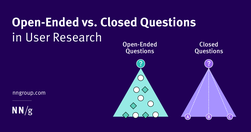
Open-ended questions result in deeper insights. Closed questions provide clarification and detail, but no unexpected insights.
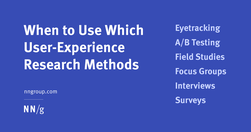
Modern day UX research methods answer a wide range of questions. To help you know when to use which user research method, each of 20 methods is mapped across 3 dimensions and over time within a typical product-development process.

Use this glossary to quickly clarify key terms and concepts related to research methods in UX.

For its first two years, the web was a text-only medium with a command-line user interface similar to the UI for current generative AI tools like ChatGPT. Only after GUI browsers launched in 1993 did the web explode. AI needs a similar GUI revolution in usability.
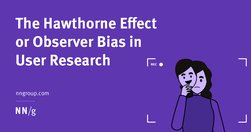
Individuals often modify their behavior if they know they are being observed. That phenomenon became known as the Hawthorne effect or the observer bias. We can mitigate this effect by building rapport, designing natural tasks, and spending more time with study participants.

Unsure where to start? Use this collection of links to our articles and videos to learn more about the basics of user experience.

Users should not have to wonder whether different words, situations, or actions mean the same thing. Follow platform and industry conventions.

Oral evidence is valid, and great histories have been told because of it. Memories are not true in the sense that they are not perfect depictions of the past. No, we cannot trust most interviewees.
Skilled UX designers and teams use tools such as empathy mapping to help them create products that keep the user or customer at the center of the design process, resulting in a product that resonates with users and provides a good user experience. But what is an empathy map, what are its uses, and how does empathy mapping fit into the process?

The Wizard of Oz is a type of user-research method that involves interaction with a mock interface controlled by a human. It is used to test costly concepts inexpensively and to narrow down the problem space.